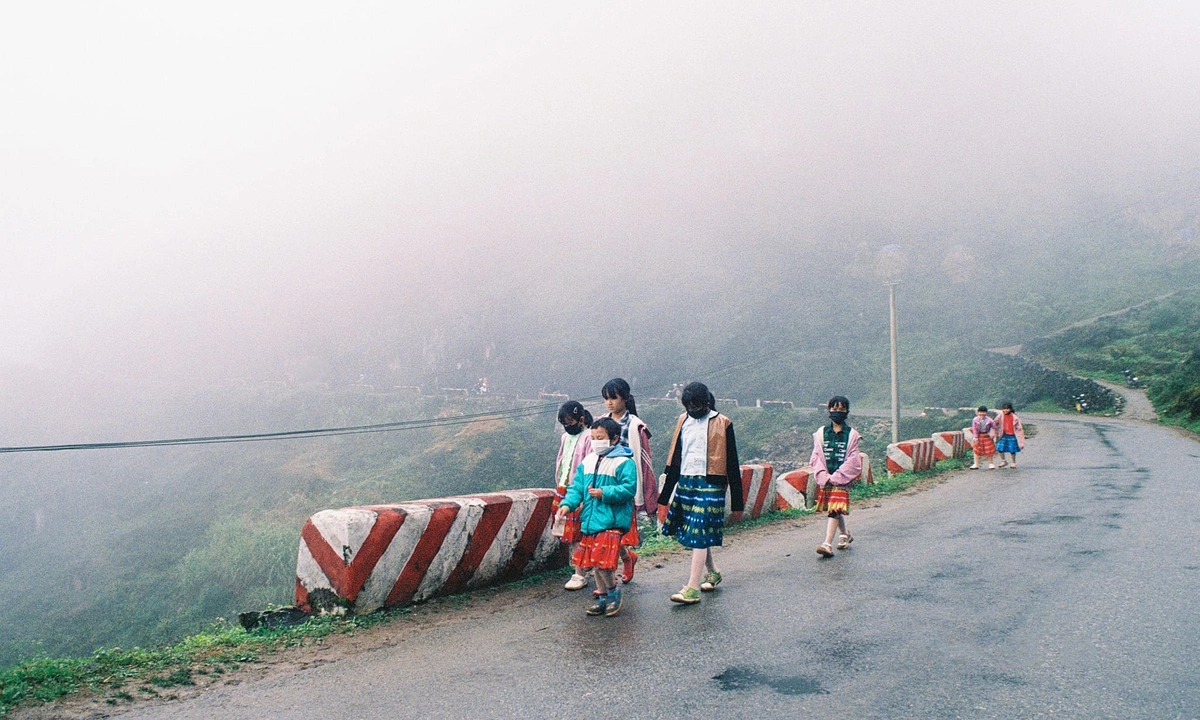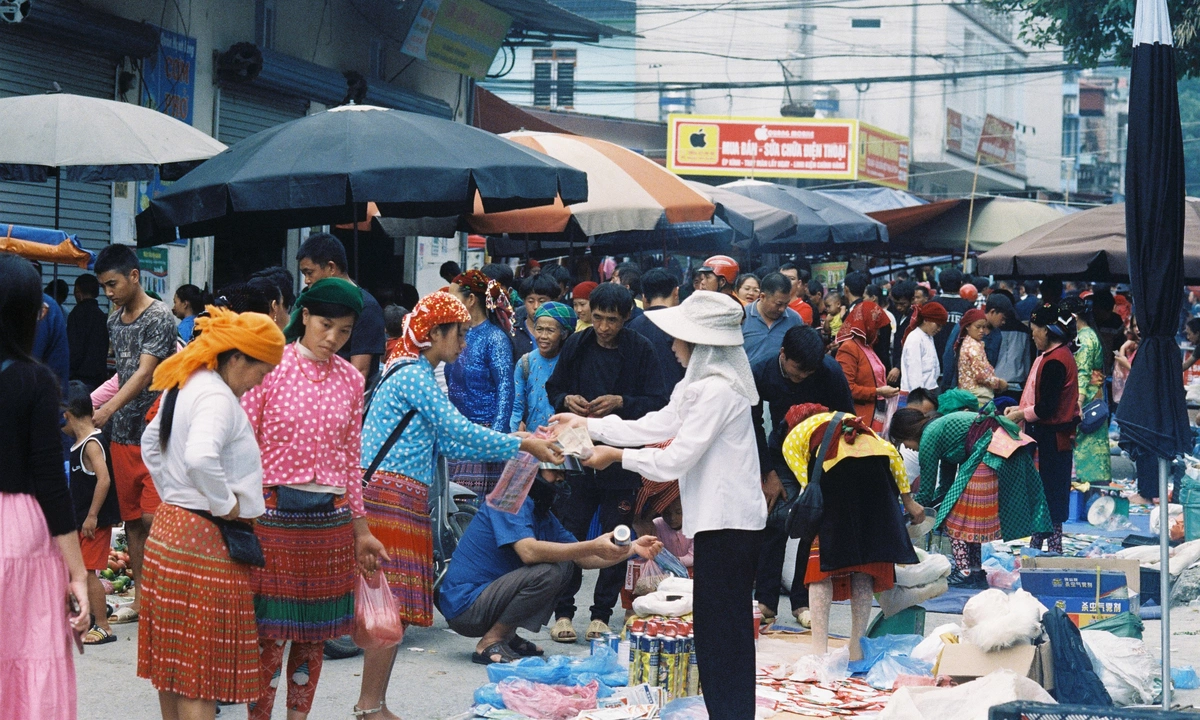Just before the Lunar New Year the plateau constantly has rain and mist. Nevertheless, on weekends a big change takes place as the market come to life.
Held in the heart of Meo Vac Town every Sunday from 4 a.m. to 4 p.m., the market draws people from the 18 communes and towns in Meo Vac District within Ha Giang Province and the neighboring Yen Minh and Dong Van districts.
It is organized in sections based on products, ranging from daily items to agricultural produce.
Nguyen Chi Nam, 38, of Hanoi, who studies history and culture, often visits the market. After seeing it at various times of the year, he says it is particularly vibrant before and after the Lunar New Year.
Before Tet people come to shop to prepare for the upcoming festivities, and post-Tet they come to enjoy games and festivals.
The market gate serves as the main spot for buying and selling livestock and poultry, farming tools, and various foods like fried rice balls and corn fritters. Nowadays stalls selling electronic items have appeared to meet the changing needs of locals.
The majority of products available at the market, like vegetables, agricultural tools, brocade fabrics, spices, and herbs, are produced or made by the sellers themselves.
A separate outdoor area is meant for the sale of corn wine, a specialty of Ha Giang Province.
Women dressed in traditional costumes sit in rows, offering customers wines to taste before making a purchase.
Next to the selling area is place for people to sit and enjoy the wine.
Corn wine has a significant place in local feasts, offerings and gatherings.
At the heart of the Meo Vac Market is a two-story food court, which is always crowded. The ground floor has food stalls with clear signs indicating what cuisines they sell.
The place has Ha Giang specialties such as thang co (stewed horse meat and offal), Trang Kim pho with hand-cut noodles, buckwheat cake, men men (steamed minced corn), and porridge with au tau (Aconitum Fortunei Hemsl), a root that needs to be processed carefully to make it no longer poisonous.
Nam usually eats pho and thang co whenever he visits the market. He notes the improvements in hygiene of the dishes. He also loves the handmade noodles in the pho, which ensure a fresh taste.
The first floor is where people slaughter and sell meat, and is a key source of buffalo and cow meat for traders in the region.
The clothes stalls on the floor showcase costumes embroidered with the traditional motifs of the Hmong, Dao and Lo ethnic peoples. There are also stalls selling jewelry and accessories.
Having attended various northern highland markets, Nam observes that they are mostly similar and differ mainly in size.
Since the closure of the Dong Van Market in 2012, Meo Vac has become the largest in the region, and showcases the cultural identities of Ha Giang's diverse ethnic groups.
Nam says: "Most people visiting the market dress in traditional costumes that represent their communities, as do the goods that are sold."
For locals, Meo Vac has become a cultural aspect rooted in their lives. Children, from a young age, accompany their parents and grandparents to the market. The market is more than just a place for buying and selling essentials; it is a place to meet friends and even find life partners.
The market and nearby Meo Vac Stadium are where the “wife-catching” tradition of the Hmong people plays out.
This practice, where a man catches a woman to be his wife, typically occurs during fairs and festivals.
The couples participating in this ritual are typically already in love and making preparations for their marriage.
"Young men seek out their future wives, while middle-aged men are often drunk and pass out right in the market," Nam says.
















